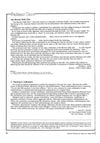Search
for
Sort by
Research
720-750 / 1000+ results
research Clinical Benefits of Baricitinib Therapy for Severe Alopecia Areata
Baricitinib treatment helps regrow eyebrow, eyelash, and scalp hair in severe alopecia areata, improving patients' emotional well-being and quality of life.

research Effects of Dermatological Medications on Male Fertility
Some dermatological medications can impair male fertility, so consult a doctor before trying to conceive.

research Developmental Toxicity of Levo-Alpha-Acetylmethadol (LAAM) in Tolerant Rats
LAAM caused developmental toxicity in tolerant rats without causing birth defects.
research Inducible Skin-Associated Lymphoid Tissue (iSALT) Detected in Scalp Treated with Topical Immunotherapy for Alopecia Areata
Topical immunotherapy for alopecia areata may work by creating immune cell clusters in the skin.
research Treatment of Alopecia Universalis with Oral Alitretinoin: A Case Report
Oral alitretinoin can quickly regrow hair in alopecia universalis.

research Fatal Autoimmunity Results from the Conditional Deletion of Snai2 and Snai3
Deleting Snai2 and Snai3 causes fatal autoimmunity.

research Cutaneous Side Effects of Modern Targeted Therapy and Immunotherapy in Patients with Dermatological Malignancies
Modern skin cancer treatments can cause skin side effects and hair loss, affecting patients' quality of life.
research Androgenetic Alopecia in Women Treated with Botulinum Toxin
Botulinum toxin injections improved hair thinning in a woman with hair loss.

research Patient Care
The Beverly Hills Diet is unhealthy and can cause serious health issues; pharmacists should advise against it and asthmatics should avoid nonprescription antihistamines.

research Are STK11 Polymorphisms a Predictor of the Response to Metformin in Polycystic Ovarian Syndrome?
STK11 gene variations do not predict how well metformin will work for PCOS, but may affect hair loss and excess hair growth.

research The Steroidogenesis Inhibitor Finasteride Reduces the Response to Both Stressful and Rewarding Stimuli
Finasteride reduces response to stress and rewards, affecting behavior and mental health.

research Isoallopregnanolone Reduces Tic-Like Behaviors in the D1CT-7 Mouse Model of Tourette Syndrome
Isoallopregnanolone may be a safe and effective treatment for reducing tics in a mouse model of Tourette syndrome.

research Allopregnanolone Is Required for Prepulse Inhibition Deficits Induced by D1 Dopamine Receptor Activation
Allopregnanolone is needed for certain brain processing issues caused by D1 dopamine receptor activation.

research The Role of Tofacitinib in the Management of Alopecia Totalis
Tofacitinib helped regrow hair in a patient with severe hair loss and improved their quality of life without side effects.

research Corticotropin Releasing Factor-1 Receptor Antagonism Associated With Favorable Outcomes of Male Reproductive Health Biochemical Parameters
Blocking CRF1 receptors improved male hormone levels and reduced testicular tumor size in men with a specific adrenal condition.

research Repurposing Steroidogenesis Inhibitors for the Therapy of Neuropsychiatric Disorders: Promises and Caveats
Drugs for hormone-related conditions might help treat mental disorders but could have serious side effects.

research Morphological, Ethnobiological, and Phytopharmacological Attributes of Tridax Procumbens Linn. (Asteraceae): A Review
Tridax procumbens is a widely used medicinal plant with many health benefits.

research Dermatoscopic Evaluation of Alopecia Areata
Alopecia areata shows various signs on the skin that aid in diagnosis and prognosis, with certain features indicating more severe disease.

research The Effect of a Combination of an Arginine Silicate Complex and Magnesium Biotinate on Hair and Nail Growth in Rats
A combination of arginine silicate complex and magnesium biotinate improves hair and nail growth in rats.

research Influence of Genotype and Hyperandrogenism on Sexual Function in Women With Congenital Adrenal Hyperplasia
Women with nonclassic congenital adrenal hyperplasia experience more sexual dysfunction and distress.

research Dickkopf-1 Expression in Androgenetic Alopecia and Alopecia Areata in Male Patients
DKK-1 gene linked to hair loss in AGA and AA patients; more research needed for potential therapy.

research Hair Cosmetics for the Hair Loss Patient
Proper hair care and safe use of hair products are crucial for those with hair loss.
research QS8: Analysis of the Whole Transcriptome in Breast Cancer Patients Undergoing Radiotherapy and Breast Reconstruction
Radiation therapy in breast cancer patients changes gene expression related to DNA damage, fibroblast growth, and hair follicle development, which could help improve treatment for radiation-induced fibrosis.
research Vibrational Raman and IR Data on Brown Hair Subjected to Bleaching
Bleaching hair changes its structure and weakens it, which is important for understanding hair damage and creating treatments.

research Planar Cell Polarity-Dependent and Independent Functions in the Emergence of Tissue-Scale Hair Follicle Patterns
Mice can correct hair follicle orientation without certain genes, but proper overall alignment needs those genes.

research The Glucocorticoid Resistance Syndrome: Two Cases of a Novel Pathogenic Variant in the Glucocorticoid Receptor Gene
A new gene variant causes glucocorticoid resistance in a mother and son.

research A Clinical Trial to Investigate the Effect of Cynatine HNS on Hair and Nail Parameters
Cynatine HNS improves hair and nail quality in 90 days.
research Serum Level of Macrophage Migration Inhibitory Factor in Egyptians With Alopecia Areata and Its Relation to the Clinical Severity of the Disease
Higher MIF levels in alopecia areata patients suggest it could be a treatment target and disease predictor.

research Age-Related Differences in the Reproductive and Metabolic Implications of Polycystic Ovarian Syndrome: Findings in an Obese, United States Population
Older obese women with PCOS have higher cardiovascular and metabolic risks despite lower androgen levels.